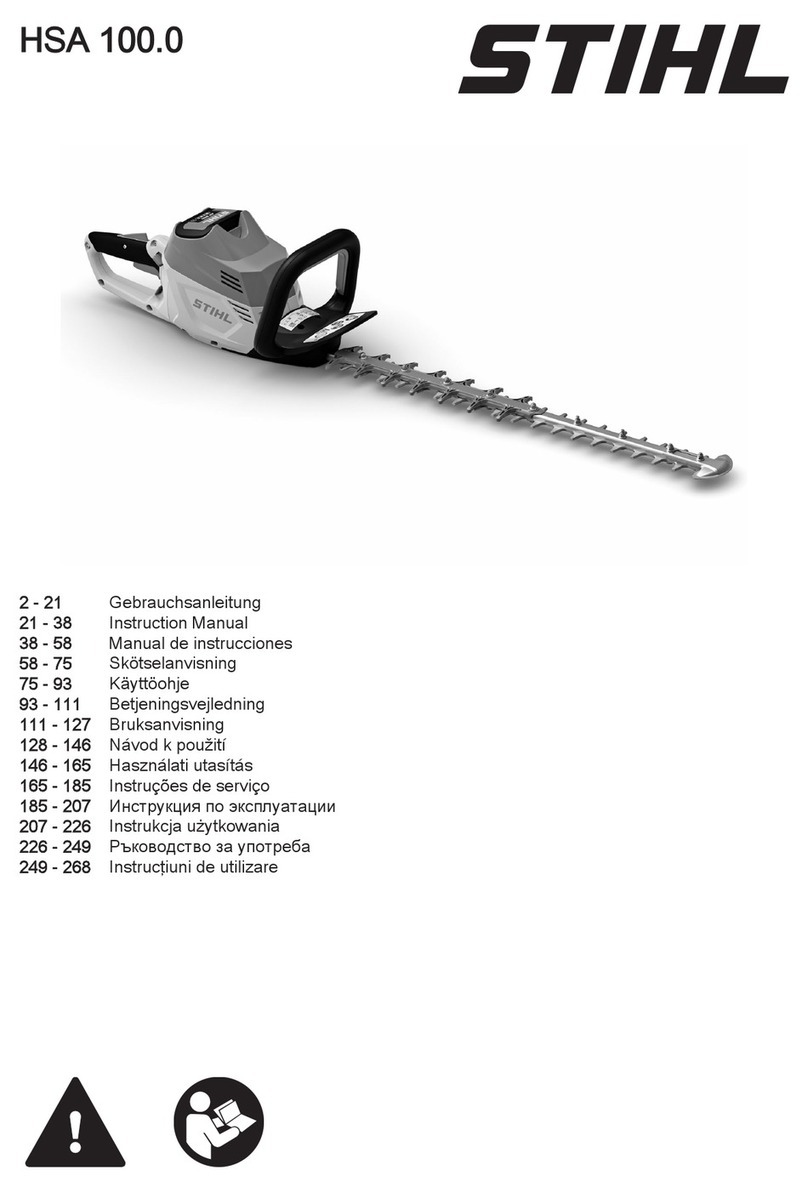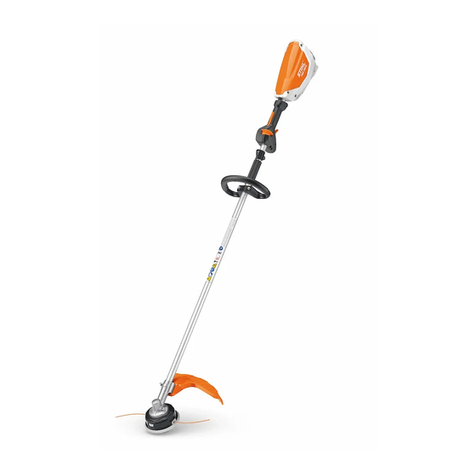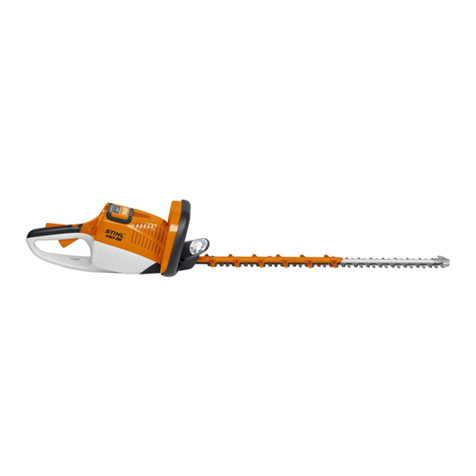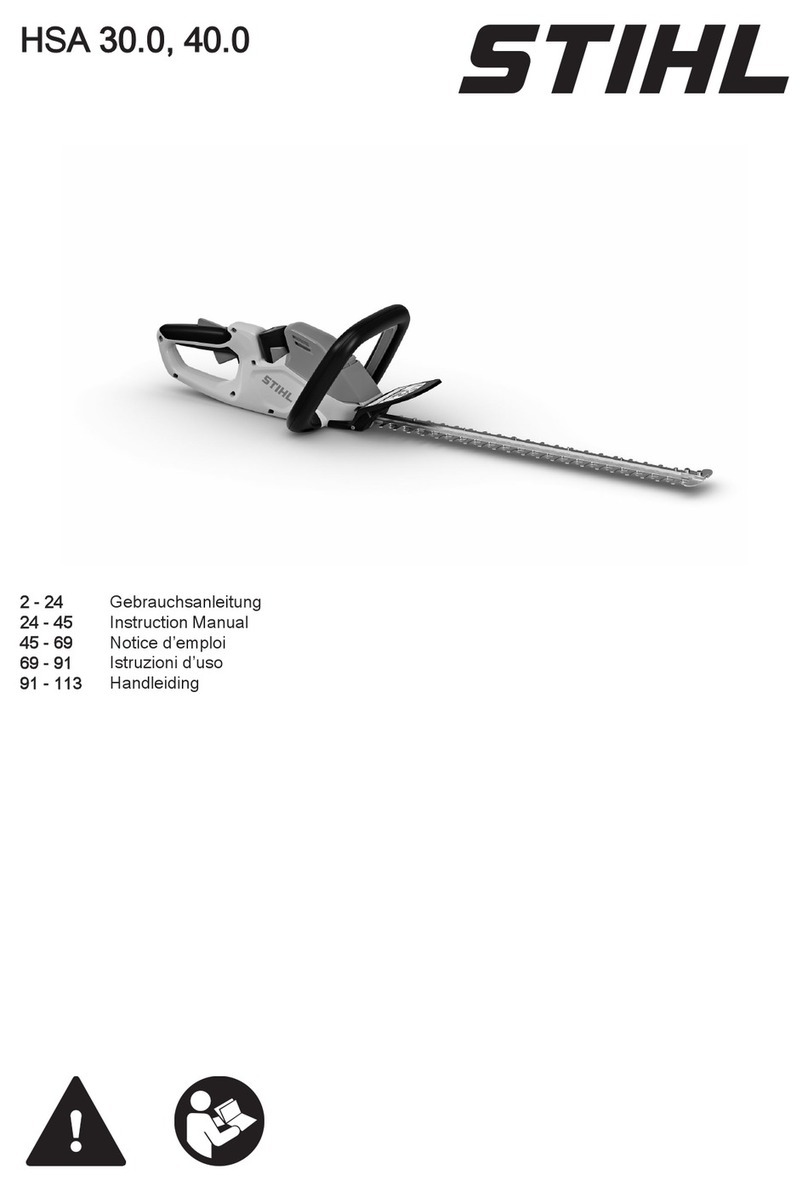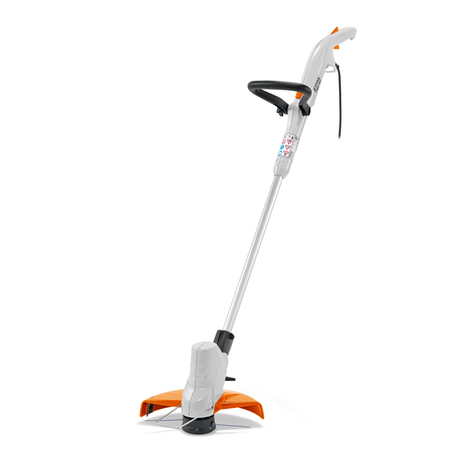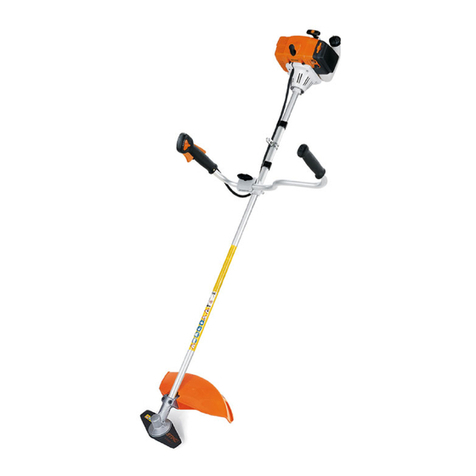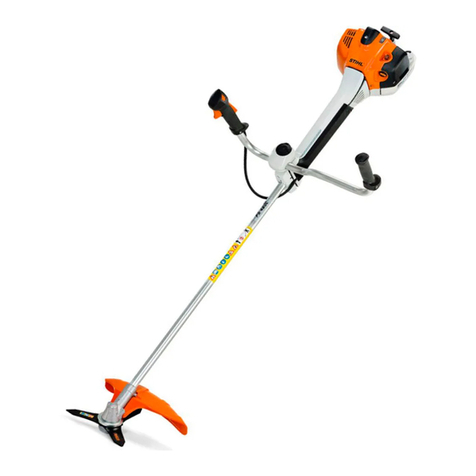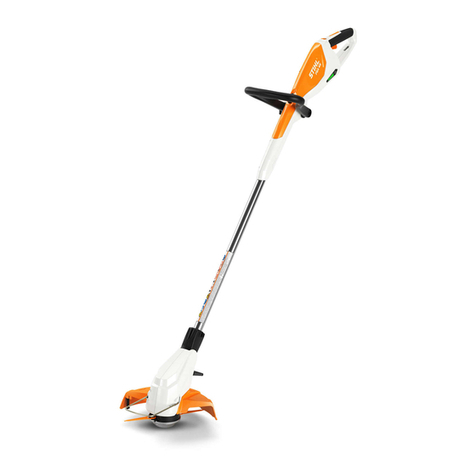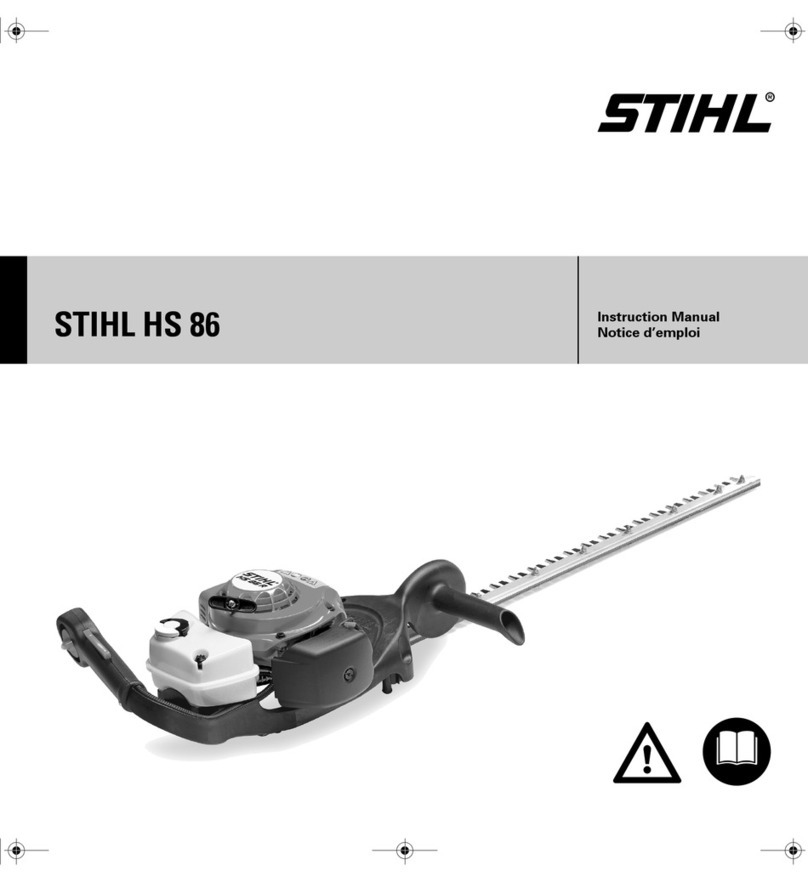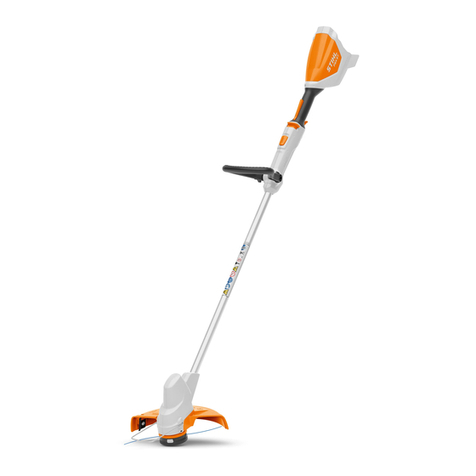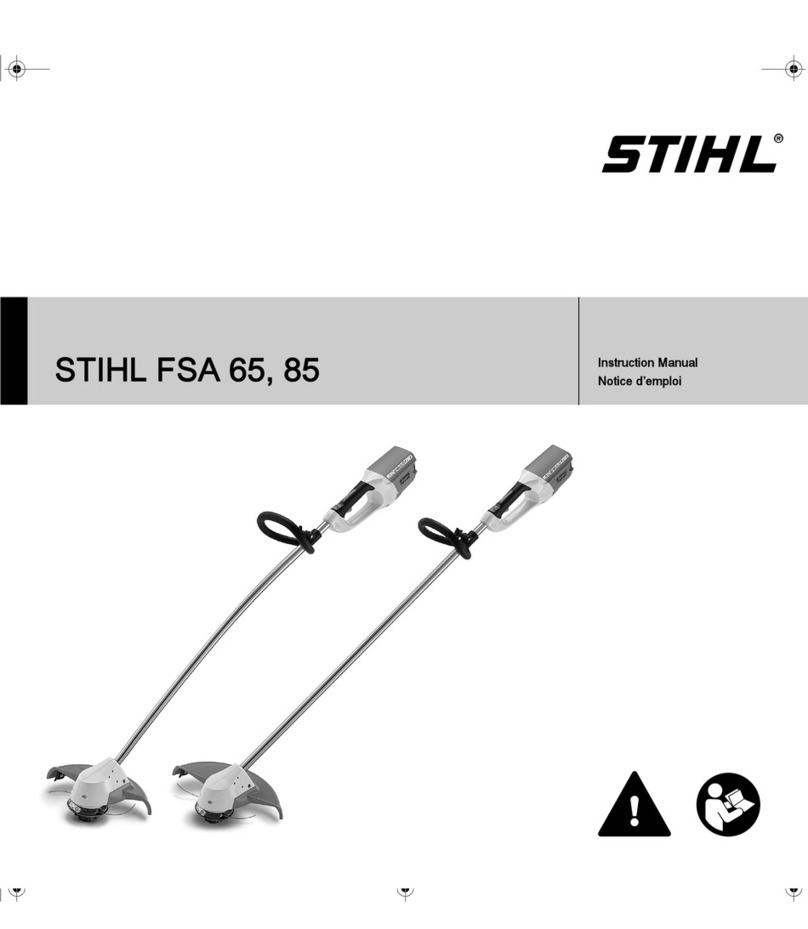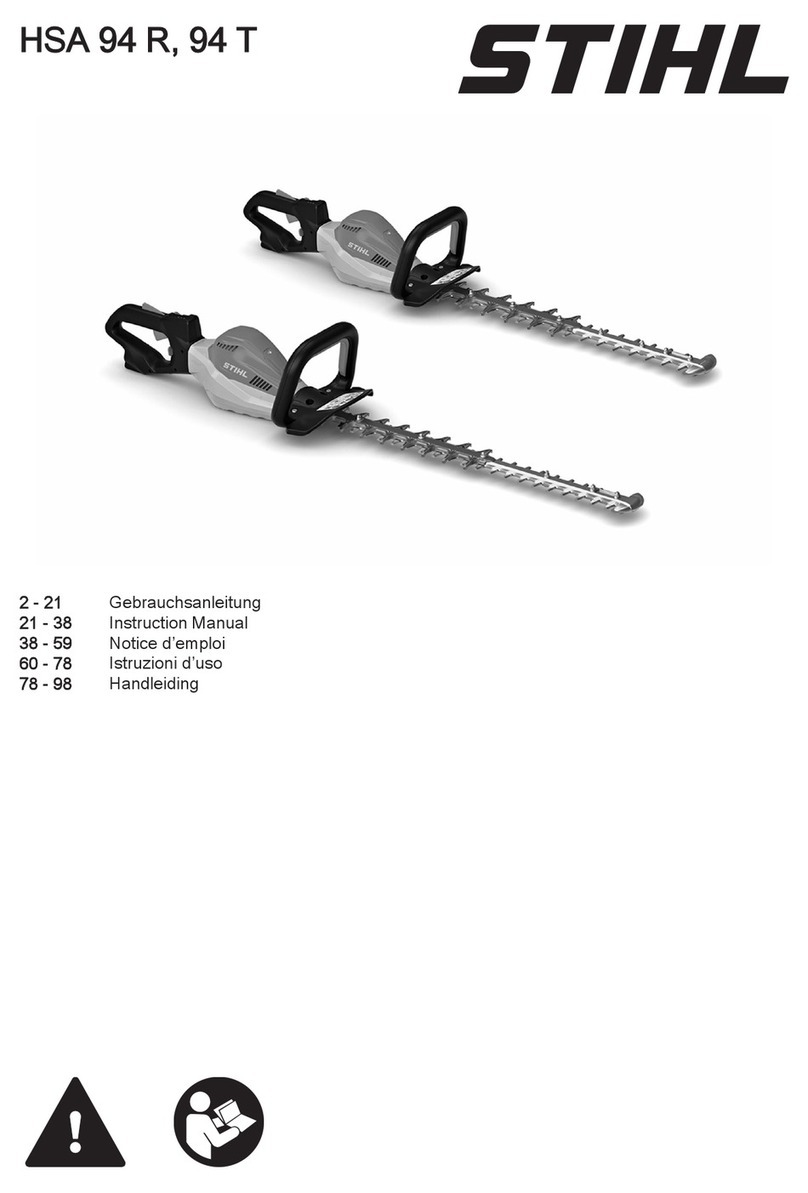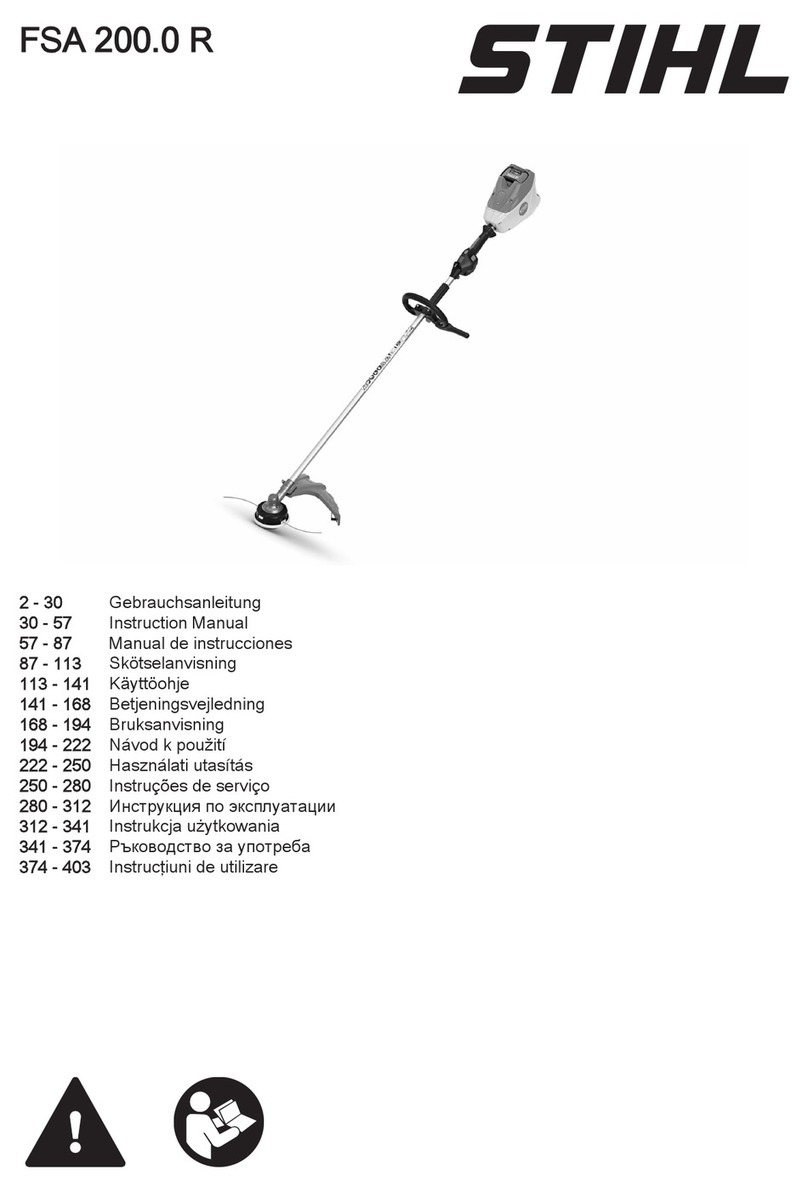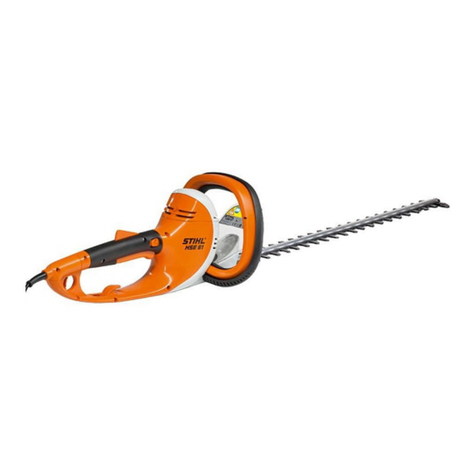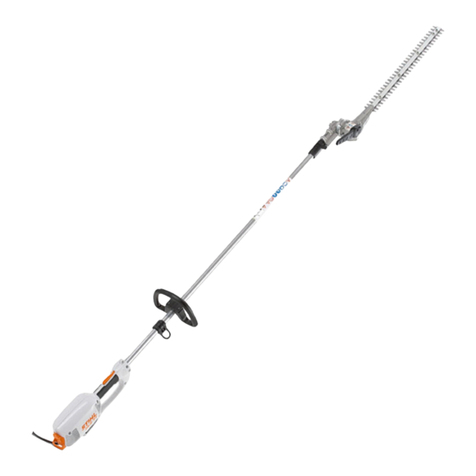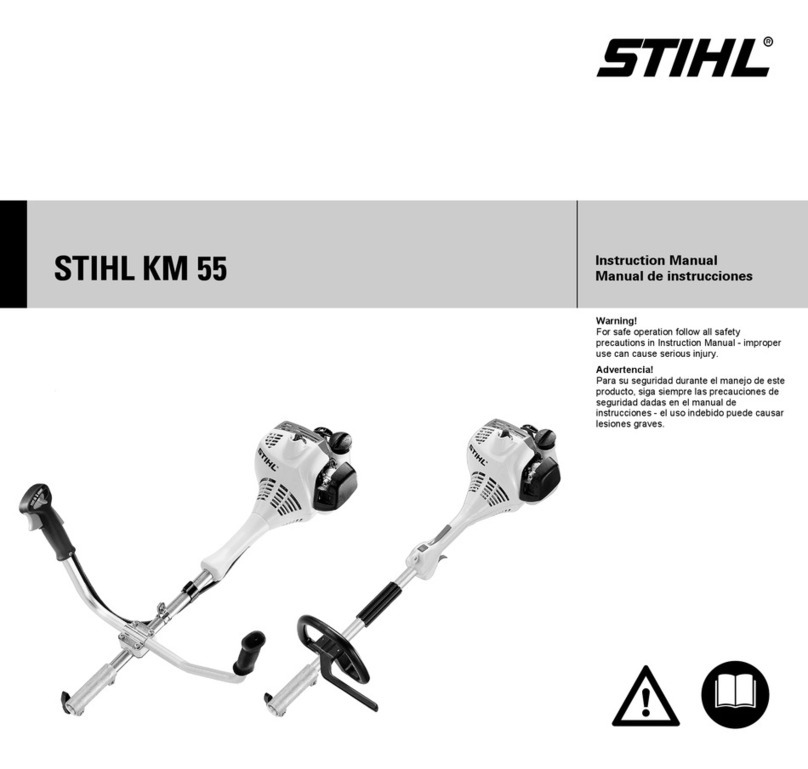HLA 65, HLA 85
English
5
Check that there are no bystanders in
the general work area.
Watch the cutting blades at all times – do
not cut areas of the hedge that you
cannot see.
Be extremely careful when cutting tall
hedges, check the other side of the
hedge before starting work.
Inspect the hedge and work area to
avoid damaging the cutting blades:
–Remove stones, rocks, pieces of
metal and other solid objects.
–When working close to the ground,
make sure that no sand, grit or
stones get between the blades.
–Take particular care when cutting
hedges next to or against wire
fences.
To avoid the risk of electrocution, do not
touch electric power lines – never cut
through electric power lines.
To reduce the risk of fire, always clean
plant residue, chips, leaves and excess
lubricant off the motor.
When working at heights:
–Always use a lift bucket
–Never work on a ladder or in a tree
–Never work on an insecure support
–Never operate your unit with one
hand
If the hedge is very dusty or dirty, spray
the blades with STIHL resin solvent from
time to time during cutting. This helps
reduce blade friction as well as the
aggressive effects of sap and the build-
up of dirt particles.
The dust that occurs during operation
may be harmful to health. If dust levels
are very high, wear a suitable respirator.
This power tool may be used in the rain
and wet. Dry off your power tool after
finishing work.
Take special care in slippery conditions
(ice, wet ground, snow), on slopes or
uneven ground.
Work calmly and carefully – in daylight
conditions and only when visibility is
good. Stay alert so as not to endanger
others.
Clear away fallen branches, scrub and
cuttings.
Watch out for obstacles: Roots and tree
stumps which could cause you to trip or
stumble.
Be particularly alert and cautious when
wearing hearing protection because
your ability to hear warnings (shouts,
alarms, etc.) is restricted.
To reduce the risk of accidents, take a
break in good time to avoid tiredness or
exhaustion.
If your power tool is subjected to
unusually high loads for which it was not
designed (e.g. heavy impact or a fall),
always check that it is in good condition
before continuing work – see also
"Before Starting Work". Make sure the
safety devices are working properly. Do
not continue operating your power tool if
it is damaged. In case of doubt, consult
your servicing dealer.
Before leaving the power tool
unattended: Always switch off the power
tool, set the retaining latch to ƒ and
remove the battery.
Check the cutting blades at regular short
intervals during operation or
immediately if there is a noticeable
change in cutting behavior:
–Switch off the motor, move the
retaining latch to ƒ and wait for the
cutting blades to come to a
standstill, remove the battery.
–Check condition and tightness, look
for cracks.
–Check sharpness.
After finishing work
Always clean dust and dirt off the power
tool – do not use any grease solvents for
this purpose.
Spray the blades with STIHL resin
solvent. Run the motor briefly to ensure
that the solvent is evenly distributed.
Do not touch the cutting
blades while the motor is
running. If the cutting
blades become jammed
by thick branches or
other obstructions, switch
off the motor immedi-
ately, move the retaining
latch to ƒ and remove
the battery before
attempting to free the
blades – risk of injury.

